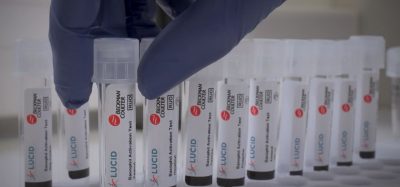Food allergens: identifying thresholds and assessing the risk to consumers
- Like
- Digg
- Del
- Tumblr
- VKontakte
- Buffer
- Love This
- Odnoklassniki
- Meneame
- Blogger
- Amazon
- Yahoo Mail
- Gmail
- AOL
- Newsvine
- HackerNews
- Evernote
- MySpace
- Mail.ru
- Viadeo
- Line
- Comments
- Yummly
- SMS
- Viber
- Telegram
- Subscribe
- Skype
- Facebook Messenger
- Kakao
- LiveJournal
- Yammer
- Edgar
- Fintel
- Mix
- Instapaper
- Copy Link
Posted: 26 April 2013 | René Crevel, Science Leader, Unilever Safety & Environmental Assurance Centre | No comments yet
Food allergies have long been known as a clinical phenomenon, with welldocumented case studies as far back as the 1920s. Their recognition as a food safety issue only arose in the 1990s partly in the wake of the remarkable increase in prevalence of general allergic diseases. In order to protect allergic consumers, legislation requiring the provision of allergen information to consumers was enacted initially across the most mature economies and now extends to include over a third of the world’s population. However, such legislation usually only explicitly covers the deliberate use of allergens as ingredients. Allergens can also be unintentionally present in products, e.g. through cross-contact during manufacturing. Management of these unintentionally present allergens requires a different approach founded on a full and thorough risk assessment. For many years, the knowledge and data needed for this were lacking, but over recent years, these gaps have been addressed. The prospects for defining operational management thresholds for allergens in the near future look good.
Food allergies have long been known as a clinical phenomenon, with welldocumented case studies as far back as the 1920s. Their recognition as a food safety issue only arose in the 1990s partly in the wake of the remarkable increase in prevalence of general allergic diseases. In order to protect allergic consumers, legislation requiring the provision of allergen information to consumers was enacted initially across the most mature economies and now extends to include over a third of the world’s population. However, such legislation usually only explicitly covers the deliberate use of allergens as ingredients. Allergens can also be unintentionally present in products, e.g. through cross-contact during manufacturing. Management of these unintentionally present allergens requires a different approach founded on a full and thorough risk assessment. For many years, the knowledge and data needed for this were lacking, but over recent years, these gaps have been addressed. The prospects for defining operational management thresholds for allergens in the near future look good.
Food allergies have long been known as a clinical phenomenon, with welldocumented case studies as far back as the 1920s. Their recognition as a food safety issue only arose in the 1990s partly in the wake of the remarkable increase in prevalence of general allergic diseases. In order to protect allergic consumers, legislation requiring the provision of allergen information to consumers was enacted initially across the most mature economies and now extends to include over a third of the world’s population. However, such legislation usually only explicitly covers the deliberate use of allergens as ingredients. Allergens can also be unintentionally present in products, e.g. through cross-contact during manufacturing. Management of these unintentionally present allergens requires a different approach founded on a full and thorough risk assessment. For many years, the knowledge and data needed for this were lacking, but over recent years, these gaps have been addressed. The prospects for defining operational management thresholds for allergens in the near future look good.






